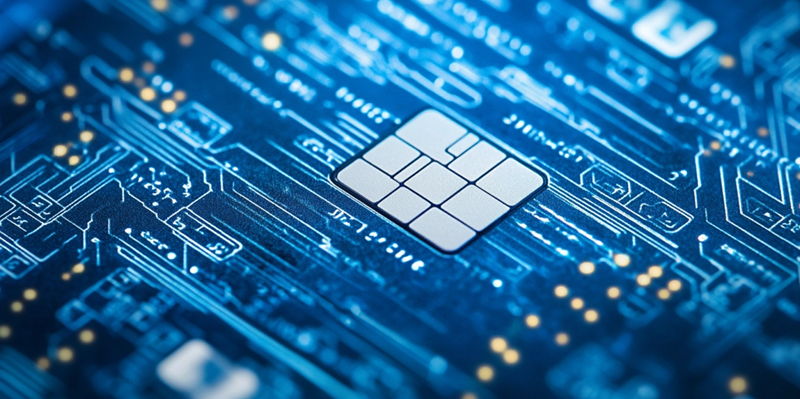Bank of America has recently announced an impactful enhancement to its business-to-business (B2B) payment solutions, showcasing the integration of its new service, Virtual Payables Direct. By augmenting the existing virtual cards program with immediate payment options via direct bank transfers, the bank aims to offer a more versatile and efficient payment approach, specifically targeting users in the UK and the Single Europe Payments Area (SEPA).
Enhanced Instant Payment Capabilities
Virtual Payables Direct introduces the ability for immediate bank transfers, building upon the traditional functions of virtual cards. This significant upgrade provides users with greater flexibility, substantially reducing payment processing times, and allowing for more efficient financial transactions.
Geographic Focus
This innovative service is designed with a particular emphasis on Europe, targeting regions such as Central and Eastern Europe, the Middle East, and Africa (EMEA). These areas have been experiencing significant growth in B2B card spending, making the present moment ideal for expanding Bank of America’s payment solutions.
Advantages for Buyers and Suppliers
Both buyers and suppliers stand to benefit from the new system. Buyers receive extended payment terms and the capability to make larger or last-minute payments. On the other hand, suppliers can look forward to prompt payments, which improve their cash flow and diminish risks related to payment acceptance. Additionally, the solution enhances supplier relationships by facilitating prompt payment discounts.
Technology and Market Position
Compared to smaller fintech companies, larger financial institutions like Bank of America are in a more advantageous position to leverage advancements in payment technology. Thanks to their integrated treasury functions, which include ACH, wire, and check processing, these banks can offer robust payment solutions without needing third-party sponsorship.
Overarching Trends
The expansion of Bank of America’s Virtual Payables Direct reflects several broader industry trends. One of the most prominent trends is the increasing growth in B2B card spending. A report by Javelin Strategy & Research anticipates a growth rate of 15.3% in commercial card spending in the targeted regions, underscoring the significant market potential. Moreover, there is a clear need for streamlined payment processes, as both buyers and suppliers seek more efficient ways to manage cash flow and reduce payment cycle complexities.
Streamlined and Condensed Points
Virtual Payables Direct delivers immediate bank transfer options alongside virtual card services, designed to accelerate payments. This service is meticulously crafted for the EMEA region, responding to the notable market growth. The system allows for faster payments, offering financial advantages and reducing risks for buyers and suppliers alike. With their integrated treasury functions, larger banks like Bank of America hold a competitive edge over smaller fintechs in the ePayables market.
Unified Understanding
The enhancement of Virtual Payables Direct signifies a strategic improvement in Bank of America’s B2B payment offerings, emphasizing instant payment capabilities and focusing on rapidly expanding markets in Europe and surrounding areas. This initiative aims to streamline payment processes and better manage cash flow for both buyers and suppliers while reinforcing the bank’s leadership in utilizing advanced payment technologies.
Coherent Narrative
The launch of Virtual Payables Direct underscores Bank of America’s dedication to advancing its payment solutions, addressing the evolving demands of B2B transactions in crucial international markets. By significantly reducing payment processing time and simplifying transactions, the bank positions itself to strengthen its value proposition to corporate clients, enhancing supplier relationships and reducing payment-related risks. This initiative aligns with the broader industry trend of adopting more immediate and flexible financial operations, establishing Bank of America’s prominence in the commercial payments sector.
Main Findings
Bank of America has recently enhanced its business-to-business (B2B) payment solutions by introducing a significant update. The new service, called Virtual Payables Direct, extends the capabilities of its existing virtual cards program. This innovative solution now includes immediate payment options via direct bank transfers, which aim to deliver a more versatile and efficient payment approach. These improvements are specifically designed to meet the needs of users in the UK and the Single Europe Payments Area (SEPA).
Furthermore, the enhanced service underscores Bank of America’s commitment to modernizing payment platforms and providing seamless, faster, and more reliable transactions for international businesses. The integration of Virtual Payables Direct marks a strategic move to simplify payment processes and increase operational efficiency for companies dealing with various vendors and suppliers across borders. By offering immediate payment options, the bank aims to reduce delays and improve cash flow management for enterprises, making it easier for them to manage their financial operations effectively. Overall, this development represents a significant leap forward in B2B payment solutions.

